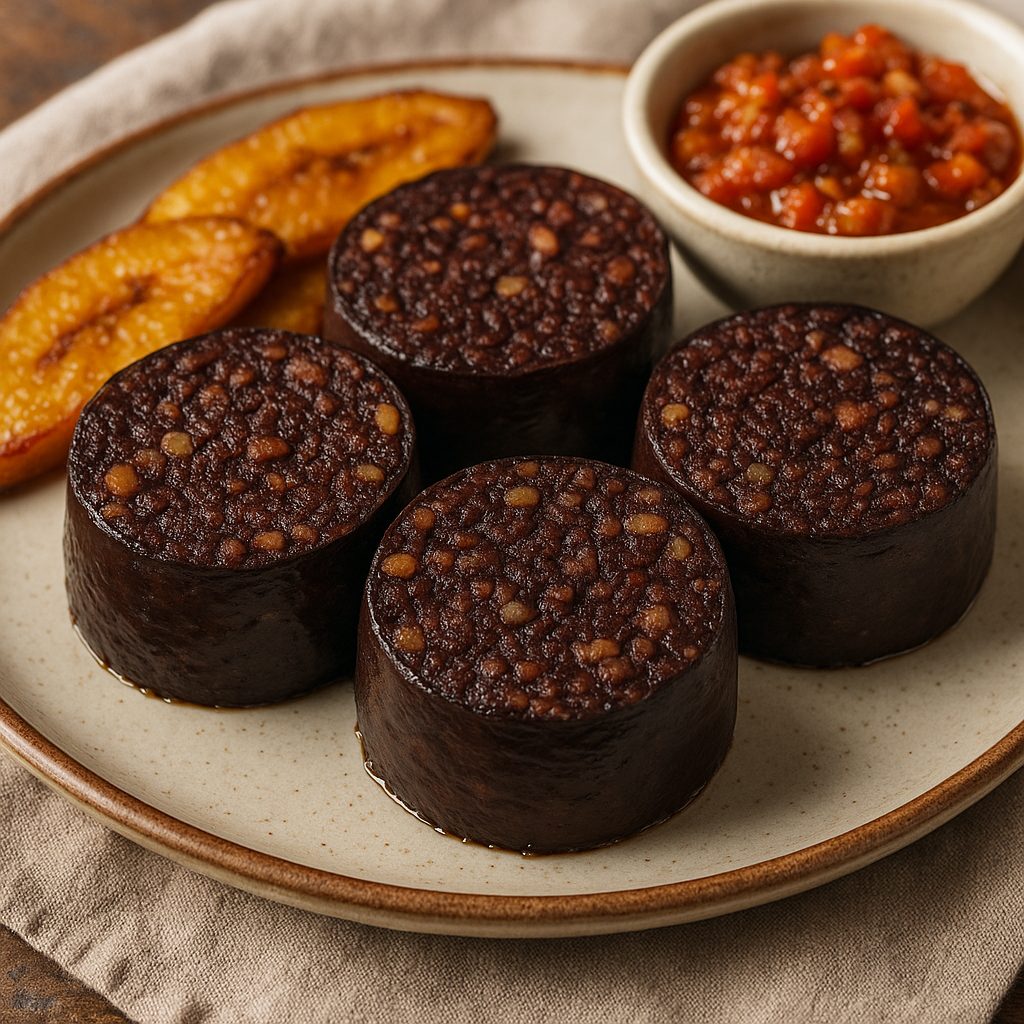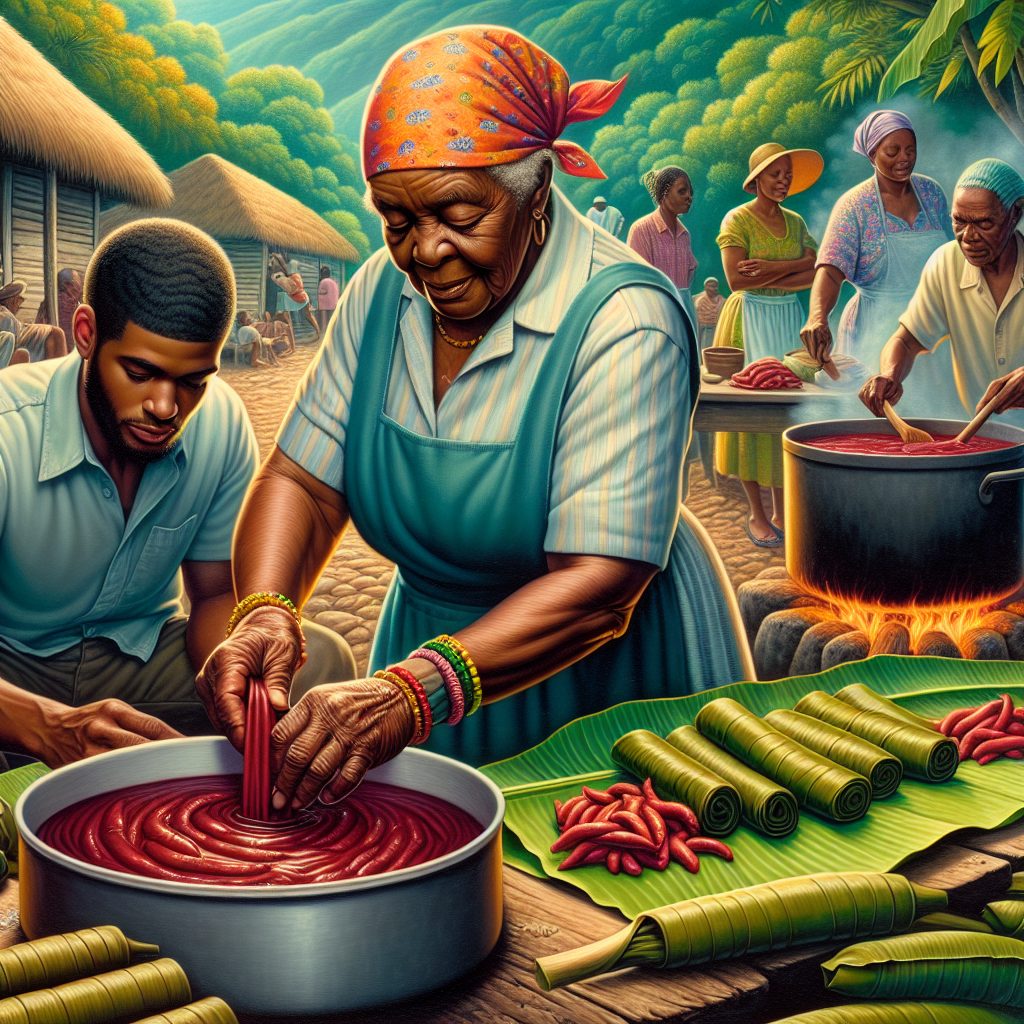Caribbean Blood Pudding: All You Want to Know
The Caribbean Blood Pudding is one of the most prominent Caribbean dishes that people consider to be comforting and deeply rooted in the Caribbean cultural traditions. Many islanders cherish Caribbean Blood Pudding because it carries a special place in their cultural heritage. Caribbean Blood Pudding has been a traditional dish throughout Caribbean homes. This is because it presents island-specific flavors even though it has an unexpected key ingredient.
The Origins of Blood Pudding
Blood pudding has a long history in the Caribbean, blending African, European, and indigenous influences. When African slaves were brought to the Caribbean, they made use of every part of the animals, including the blood, to create dishes that would sustain them. European settlers also contributed their own recipes for blood sausages, which over time evolved into the Caribbean version we know today.
In those early days, blood pudding was a clever way to avoid wasting any part of the animal, and it has remained a beloved part of Caribbean cuisine ever since. It’s a beautiful example of how food, culture, and history come together to create something truly special.
What Goes Into Making Blood Pudding?
Making Caribbean Blood Pudding is quite a simple process. Here are the main ingredients:
- Pig or cow blood: This is the key ingredient, and it’s usually mixed with rice, barley, or other grains to give it structure.
- Rice: Rice plays a big role in binding the pudding together, making its filling, and giving it a soft texture.
- Seasoning: The real magic happens with the seasoning. A mix of thyme, scallions, garlic, onions, and Scotch bonnet peppers gives the pudding a unique flavor profile that is distinctly Caribbean.
- Barley: Some recipes may include barley for extra texture and depth.
These ingredients vary slightly across different Caribbean islands, but the common thread is the careful combination of blood, rice, and spices to create a flavorful, comforting dish.
The Art of Preparing Caribbean Blood Pudding
Making Caribbean Blood Pudding is a bit of an art form. The first step is to prepare the blood mixture by combining it with the rice, barley, and spices. This mixture is then stuffed into casings, typically made from pig intestines, which helps in shaping the pudding and giving it a traditional look.
The casings are tightly tied and then boiled or steamed for several hours, allowing the flavors to develop. Seasoning is crucial. The blood, while rich, can have a strong taste on its own, so it’s essential to balance it with the perfect blend of spices and herbs. The addition of Scotch bonnet peppers adds a little heat, giving the dish an extra layer of flavor that’s characteristic of Caribbean cuisine.
A Comfort Food and a Celebration Dish
In the Caribbean, Blood Pudding is more than just a meal; it’s a part of the culture. It’s often enjoyed as a hearty breakfast or as a main course during special occasions and family gatherings. During festivals or holidays, you’ll often find this dish at the center of the table, bringing friends and family together.
In countries like Trinidad, it’s commonly referred to as “black pudding” and is served with a side of chutney or pepper sauce. In Jamaica, it might be paired with hard-dough bread or fried plantains. No matter how it’s served, Blood Pudding is sure to be a crowd-pleaser, filled with history and meaning.
Where to Find the Best Blood Pudding in the Caribbean
If you ever find yourself in the Caribbean, one of the best ways to experience Blood Pudding is by visiting local food markets or street vendors. These are often the places where the recipe is passed down through generations, so you’re sure to get the most authentic version.
In Jamaica, vendors sell blood pudding alongside other popular street foods like jerk chicken. In Trinidad, it’s easy to find “black pudding” at markets or street stalls, often served with pepper sauce for that extra kick.
Conclusion
Caribbean Blood Pudding is more than just food, it’s almost a social tradition in the region. Anyone who can manage to taste this dish will experience an authentic Caribbean flavor unlike any other. The dish serves as a pleasant taste of culinary genius and is genuinely considered to be a masterpiece by many.







